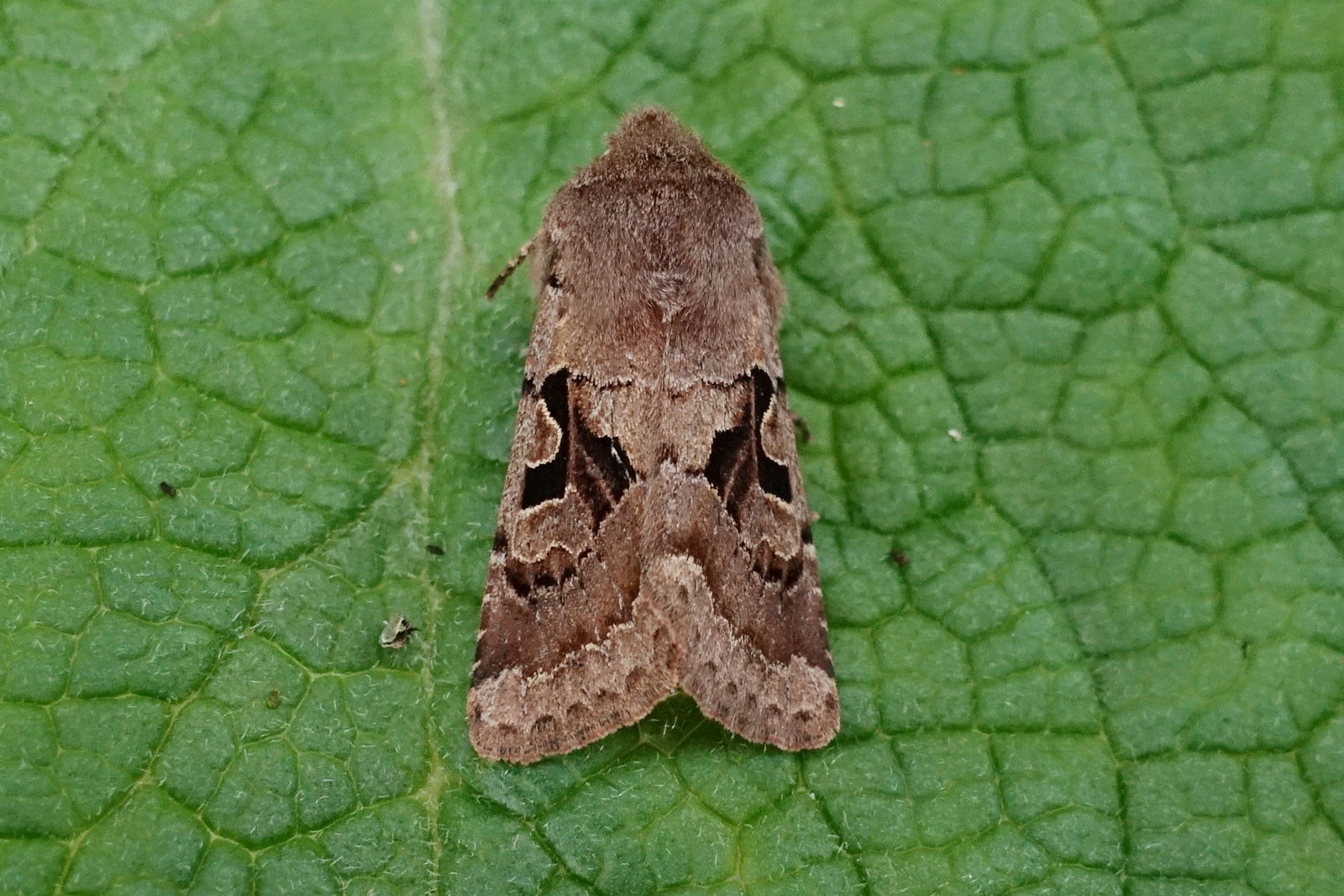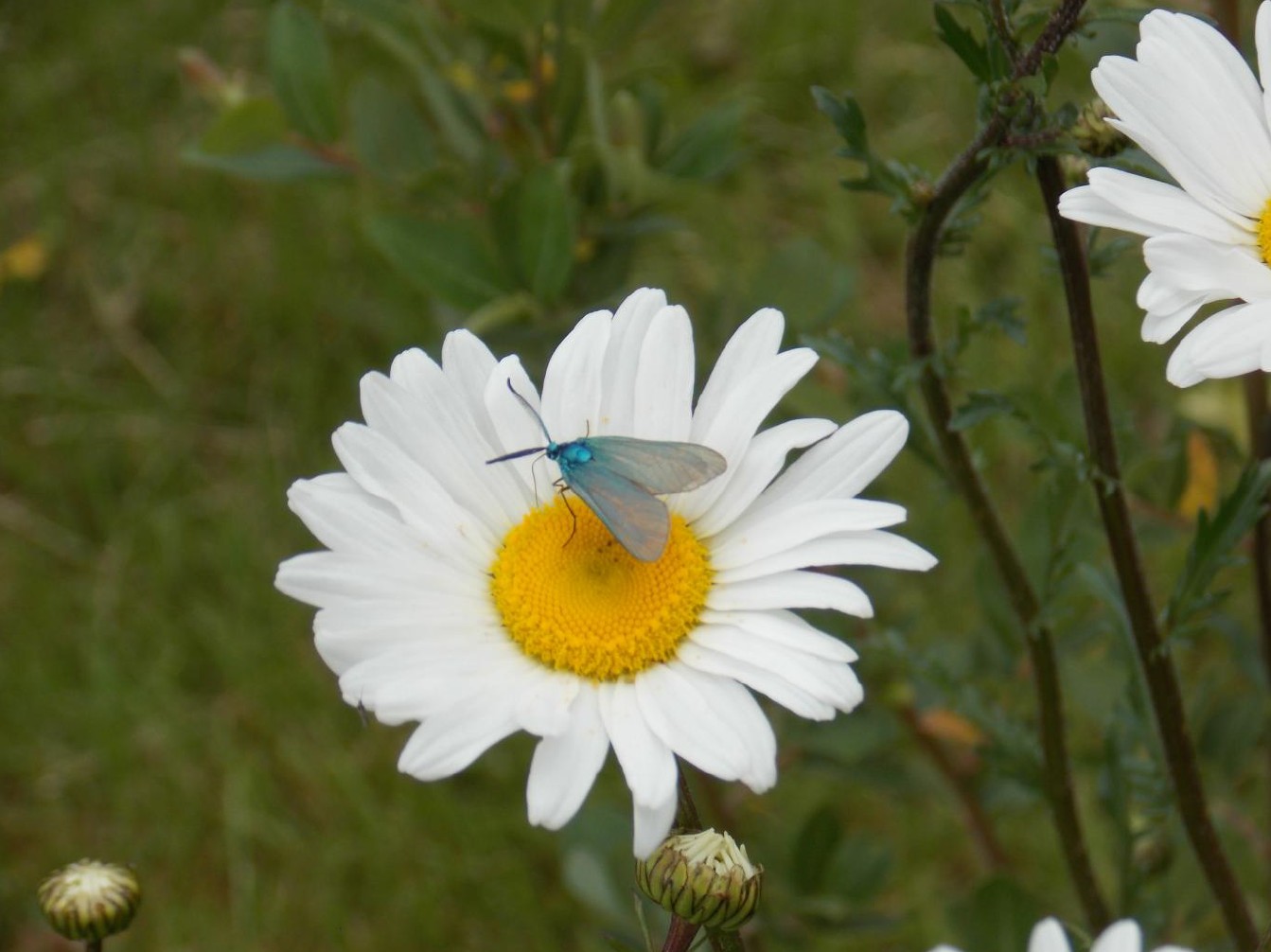This week it is the turn of the Hebrew Character – one of the most distinct, widespread and abundant spring species we have in D&G. The moth is named after the diagnostic black mark on its forewing which looks similar to letters in the Hebrew alphabet. Although it does have some variations in colour, in the vast majority of cases the shape of the mark can still be seen. The adult moth emerges very early in the year and reaches its peak numbers in late April and early May to suddenly drop off in abundance by the end of May. In our area it has been recorded in every month of the year except December but in January and from June onwards the number of records is in single figures. Similar patterns of activity are recorded in other parts of Scotland. During April and in May huge numbers of these moths can appear in the light trap with up to 78 being recorded in a standard mercury vapour Robinson trap. It is also very apparent that this moth will fly in almost any weather and on freezing nights it is often the only species in the trap.
The moth can be found in just about any habitat although there seems to be fewer records from the west of Wigtownshire vice-county – probably because of fewer recorders covering that area. The records go back to 1862 and since 2000 there have been from12 to 174 per year, the variation probably being the result of different recording efforts.
The Hebrew Character’s caterpillar is green with a green head and three fine yellow lines running along its back. A broad white line runs along the side enclosing the spiracles. The larva is similar in general appearance to some other members of the genus such as the Common Quaker and the Clouded Drab. For such a common moth its caterpillar is not often seen probably because it feeds at night and is hidden in leaves spun together during the day. It can feed on a wide range of plants including Bilberry and Meadowsweet, Hawthorn, Birch, Sallow and Oak and even Stinging Nettle. In late June the fully grown caterpillar pupates in a cocoon beneath the soil.
A common and familiar moth which to me characterises Spring and as its numbers fall the diversity of species starts to rapidly increase as summer approaches.




